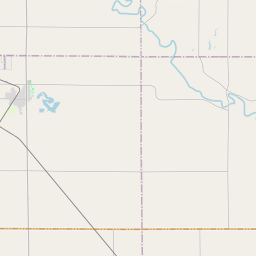The History Of Scotland Academy
Historical marker location:
Scotland, South Dakota
( Marker is on Fourth Street (State Highway 25) 0.1 miles north of Walnut Street, on the right when traveling north.)







© OpenStreetMap contributors
Loading...
Searching for other points of interest within 3 miles of this location.South Dakota was the first state in the United States to grant women the right to vote, in 1890.
About Bon Homme County
Bon Homme County Timeline
Bon Homme County, located in southeastern South Dakota, has a rich and diverse history dating back centuries. The area was originally inhabited by Native American tribes, including the Dakota Sioux, who utilized the fertile land for hunting and gathering. In the early 1800s, European fur traders and explorers began to make their way through the region, establishing trading posts and introducing new technologies and cultural influences.
The first permanent European settlement in the area now known as Bon Homme County was established in 1818 by French Canadian fur trader Charles Grignon. The settlement, called Bon Homme, grew quickly with the addition of other trappers, traders, and settlers. In 1859, Bon Homme became the first county in Dakota Territory, and Dakota City (now Tyndall) was designated as the county seat.
During the mid- to late-1800s, Bon Homme County experienced significant population growth and economic development. Immigrants from various European countries, such as Germany, Bohemia, and Norway, arrived in the area and established farms and ranches. Agriculture quickly became the backbone of the local economy, with wheat, corn, and livestock production being the main sources of income for most residents.
Bon Homme County has also played a significant role in the history of education in South Dakota. The first public school in the territory was established in Tyndall in 1872, and the county boasts many historic one-room schoolhouses that were once scattered throughout the rural areas. Today, Bon Homme County is a thriving and close-knit community that honors its rich heritage while embracing modern developments and opportunities for growth.
The first permanent European settlement in the area now known as Bon Homme County was established in 1818 by French Canadian fur trader Charles Grignon. The settlement, called Bon Homme, grew quickly with the addition of other trappers, traders, and settlers. In 1859, Bon Homme became the first county in Dakota Territory, and Dakota City (now Tyndall) was designated as the county seat.
During the mid- to late-1800s, Bon Homme County experienced significant population growth and economic development. Immigrants from various European countries, such as Germany, Bohemia, and Norway, arrived in the area and established farms and ranches. Agriculture quickly became the backbone of the local economy, with wheat, corn, and livestock production being the main sources of income for most residents.
Bon Homme County has also played a significant role in the history of education in South Dakota. The first public school in the territory was established in Tyndall in 1872, and the county boasts many historic one-room schoolhouses that were once scattered throughout the rural areas. Today, Bon Homme County is a thriving and close-knit community that honors its rich heritage while embracing modern developments and opportunities for growth.
Bon Homme County Timeline
This timeline provides a concise overview of the key events in the history of Bon Homme County, South Dakota.
- 1862 - The Homestead Act passes, encouraging settlement in the area that would become Bon Homme County
- 1864 - Bon Homme County is officially established
- 1869 - The first post office is established in the county
- 1872 - The first courthouse is built in Tyndall, the county seat
- 1891 - Passenger trains begin running through Bon Homme County, boosting transportation and commerce
- 1930s - The Great Depression leads to economic hardships in the county
- 1940s-1950s - World War II and post-war era bring changes and advancements to the county
- 2000 - The county's population reaches its highest point at over 7,000 residents
- 2010 - Flooding in the area causes significant damage to homes and infrastructure